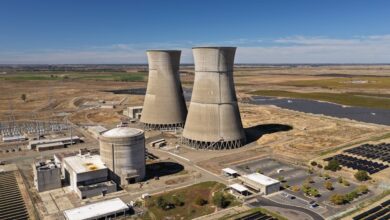The Hidden Costs Lurking in Plain Sight

In the intricate ballet of global commerce, brands are constantly pirouetting through a complex landscape of rising costs. We’ve all seen the headlines: supply chain disruptions, fluctuating material prices, and a geopolitical stage that keeps us guessing. For manufacturers, these aren’t just abstract economic trends; they translate directly into squeezed margins, delayed product launches, and a constant battle to deliver quality without breaking the bank. The pressure to innovate while simultaneously cutting costs has never been more intense, often before even a single tariff rears its head.
So, when a startup like Cavela announces it has landed a hefty $6.6 million in funding, specifically to help brands beat these foundational manufacturing costs, it’s worth sitting up and paying attention. This isn’t just another tech company seeking investment; it’s a testament to a growing market need and a promising solution for a problem that keeps countless executives awake at night. Cavela claims its AI agents can slash product manufacturing costs by an average of 35%. If that figure sounds audacious, it also highlights the immense potential for optimization that still exists within even the most established manufacturing processes.
The Hidden Costs Lurking in Plain Sight
Before we dive into how Cavela plans to revolutionize things, let’s acknowledge the elephant in the factory: manufacturing costs are rarely simple. We often think of tariffs as the big, bad wolf, but the truth is, a significant chunk of expenses comes from inefficiencies long before goods ever cross a border. These are the “pre-tariff” costs – the foundational expenses embedded in every step of the product lifecycle.
Think about it: material sourcing often involves intricate negotiations with multiple suppliers, each with varying lead times and pricing structures. Product designs might be brilliant from an aesthetic standpoint but incredibly complex (and thus expensive) to manufacture. Production lines can suffer from bottlenecks, wasted materials, or suboptimal process flows that accumulate small losses into significant sums over time. Even logistical planning, from warehousing to shipping, can hide surprising inefficiencies.
These aren’t always glaring errors. More often, they’re systemic issues, legacy processes, or simply the natural accumulation of design choices and operational habits developed over years. Identifying these often requires a level of detailed analysis and cross-functional visibility that traditional methods struggle to provide. It’s like trying to find a needle in a haystack, except the haystack is constantly shifting, and the needle keeps changing shape.
Beyond the Tariff Headlines: Unpacking True Inefficiency
While tariffs can certainly add a layer of financial burden, they often serve as a spotlight, making us keenly aware of our underlying cost structure. If your base manufacturing costs are already high due to inefficiencies, even a minor tariff can push a product out of profitability. Conversely, if your core processes are lean and optimized, you’re far better positioned to absorb external shocks, whether they come from trade policies, geopolitical events, or sudden spikes in raw material prices. This is the crucial context in which Cavela’s value proposition truly shines: tackling the root causes, not just the symptoms.
Cavela’s AI: A New Blueprint for Cost Efficiency
So, how does Cavela propose to achieve such significant cost reductions? The magic, as is often the case in today’s industrial landscape, lies in artificial intelligence. But this isn’t just about plugging in a standard software solution; it’s about deploying intelligent “AI agents” that function with a depth of analysis far beyond conventional enterprise systems.
Imagine a digital assistant that can sift through mountains of data – from your product’s initial CAD designs and material specifications to supplier quotes, historical production data, logistics costs, and even market demand forecasts. These AI agents don’t just organize the data; they actively analyze it, identify patterns, and predict outcomes that human teams might miss. They can pinpoint, for instance, that switching to a slightly different grade of plastic might reduce material costs by 10% without compromising durability, or that re-sequencing two steps on the assembly line could save hours of labor each week.
The beauty of this approach is its holistic view. Manufacturing isn’t a series of isolated silos; it’s an interconnected ecosystem. A change in material can affect tooling, which impacts production time, which influences shipping schedules. Cavela’s AI agents are designed to understand these interdependencies, offering recommendations that optimize the entire system, not just one component. This comprehensive perspective is key to unlocking that reported 35% average cost reduction.
The “AI Agent” Advantage: More Than Just Software
What sets these “AI agents” apart from standard analytical tools? It’s their ability to learn and adapt. They’re not just running predefined algorithms; they’re continuously processing new data, refining their models, and providing increasingly accurate and nuanced insights. This means as market conditions shift, as new suppliers emerge, or as product designs evolve, the AI agents keep pace, offering dynamic recommendations that ensure ongoing optimization.
For a brand, this translates into actionable intelligence. Instead of guessing which supplier offers the best long-term value, or painstakingly modeling the cost implications of a design tweak, teams receive data-backed recommendations. This empowers them to make faster, more confident decisions that directly impact the bottom line, turning complex problems into solvable equations.
What This Means for Brands (and Your Wallet)
The implications of Cavela’s technology, backed by this substantial funding, are far-reaching. Beyond the immediate financial relief of reducing manufacturing costs, brands stand to gain a significant competitive edge in a global market that demands agility and efficiency.
Firstly, there’s the obvious financial upside. A 35% reduction in manufacturing costs isn’t just a marginal improvement; it’s a game-changer. It can free up capital for R&D, marketing, or expansion. It can allow for more competitive pricing, making products more attractive to consumers. Or, it can simply boost profit margins, rewarding shareholders and enabling sustainable growth.
Secondly, it fosters resilience. In a world prone to disruptions, having a lean, optimized manufacturing process means you’re better equipped to handle unexpected challenges. If a particular material becomes scarce or expensive, the AI can quickly identify alternatives or suggest design modifications to mitigate the impact. This proactive capability transforms risk management from a reactive scramble into a strategic advantage.
From Factory Floor to Bottom Line: Tangible Benefits
- Faster Time to Market: Streamlined processes and optimized designs mean products can move from concept to consumer more quickly.
- Enhanced Product Innovation: With less budget tied up in manufacturing inefficiencies, more resources can be allocated to developing new features or entirely new products.
- Improved Sustainability: AI-driven optimization often leads to reduced waste, more efficient energy use, and better resource allocation, aligning with growing consumer and regulatory demands for eco-friendly practices.
- Strategic Sourcing: Beyond just cost, AI can help identify suppliers that offer the best blend of reliability, quality, and ethical practices, building stronger, more resilient supply chains.
Cavela’s $6.6 million isn’t just an investment in a startup; it’s an investment in the future of manufacturing. It signifies a growing recognition that AI isn’t just for consumer tech or data analytics firms, but has a transformative role to play in the very heart of how we make things. By offering brands a powerful tool to dissect and optimize their pre-tariff manufacturing costs, Cavela is poised to help them navigate an increasingly complex economic landscape, turning potential vulnerabilities into sources of strength and paving the way for a more efficient, resilient, and profitable industrial future.





